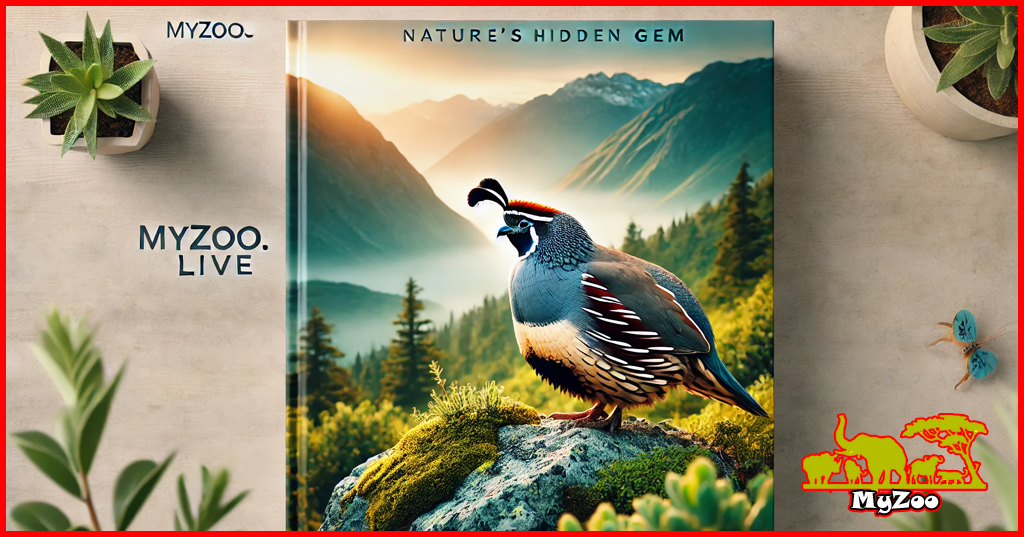
Mountain Quail: A Complete Guide to North America’s Hidden Gem
The Mountain Quail (Oreortyx pictus) is one of North America’s most elusive and fascinating game birds. Known for its striking plumage, secretive nature, and high-altitude habitat, this bird captivates birdwatchers and wildlife enthusiasts alike. Unlike other quail species, the Mountain Quail prefers rugged terrains, making it a challenge to spot in the wild.
This comprehensive guide will delve into everything you need to know about this bird, from its habitat and diet to conservation status and hunting regulations. Whether you’re a birder, hunter, or nature lover, this article will provide valuable insights into this remarkable bird.
What is a Mountain Quail?
This is the largest quail species in North America, reaching up to 26 cm (10 inches) in length. It is easily recognizable by its two long, straight head plumes, which distinguish it from other quail species.
Key Characteristics:
- Scientific Name: Oreortyx pictus
- Size: 10–11 inches long
- Weight: 6–9 ounces
- Plumage: Grayish-brown with a chestnut belly and white barring on the sides
- Habitat: Dense, mountainous regions of western North America
- Lifespan: 2–3 years in the wild
The Mountain Quail is a ground-dwelling bird that prefers thick brush and forested areas for protection against predators.
Habitat and Distribution: Where to Find the Mountain Quail
Mountain Quail primarily inhabit western North America, particularly in the following states:
- California
- Oregon
- Washington
- Idaho
- Nevada
- Utah
- Arizona
Preferred Habitat:
Mountain Quail favor high-altitude environments with dense vegetation, often found in:
- Coniferous forests
- Chaparral-covered slopes
- Brushy hillsides
- Oak woodlands
Due to their preference for steep and remote landscapes, spotting this in the wild requires patience and effort.
Diet and Feeding Habits

These are omnivores, meaning they consume both plant and animal matter. Their diet varies seasonally and includes:
Plant-Based Foods:
- Seeds (grasses, shrubs, and wildflowers)
- Berries (blackberries, elderberries)
- Acorns
- Leaves and shoots
Animal-Based Foods:
- Insects (beetles, ants, grasshoppers)
- Small invertebrates
Feeding Behavior:
Mountain Quail forage on the ground, scratching through leaf litter and soil to uncover food. They are most active during dawn and dusk, making these the best times to observe their feeding behavior.
Breeding and Nesting
The breeding season for Mountain Quail typically begins in spring (March to June). These birds are monogamous and form strong pair bonds.
Nesting Behavior:
- Nest Location: Concealed in dense vegetation, often near water sources
- Nest Construction: A shallow depression lined with grass, leaves, and twigs
- Eggs: Clutch size ranges from 9 to 11 eggs
- Incubation Period: 21–25 days, mainly by the female
- Chick Development: Precocial (chicks hatch fully feathered and are capable of movement soon after birth)
Both parents participate in raising the chicks, guiding them to food sources and protecting them from predators.
Predators and Threats
Despite their secretive nature, they face numerous threats from predators and environmental challenges.
Natural Predators:
- Mammals: Foxes, bobcats, and raccoons
- Birds of Prey: Hawks and owls
- Reptiles: Snakes preying on eggs and chicks
Environmental Threats:
- Habitat loss due to deforestation and urbanization
- Climate change impacting food availability
- Hunting pressure in certain areas
Conservation Status
The Mountain Quail is not currently considered endangered, but its population has declined in some regions due to habitat destruction.
Conservation Efforts:
- Habitat restoration projects
- Reintroduction programs in areas where populations have dwindled
- Hunting regulations to maintain sustainable numbers
Organizations like the National Audubon Society and The Nature Conservancy are actively working to protect this species.
Hunting Regulations and Guidelines
For those interested in hunting, it’s essential to follow state-specific regulations.
General Hunting Rules:
- Season: Typically falls between September and January
- Bag Limit: Varies by state, usually around 10 birds per day
- License Requirements: Hunters must obtain the appropriate permits
- Ethical Hunting Practices: Use non-toxic shot, respect bag limits, and avoid over-harvesting
Before planning a hunting trip, check with local wildlife agencies for the latest regulations.
Fun Facts About Mountain Quail
- Largest Quail Species: They hold the title of largest North American quail.
- Strong Climbers: Unlike other quail, they can climb steep terrains with ease.
- Mysterious Migrants: Some populations undergo seasonal migrations between elevations.
- Distinctive Call: Their call is a clear, whistling sound, often heard in dense forests.
Frequently Asked Questions (FAQs)
1. Are Mountain Quail endangered?
No, but their population is declining in some areas due to habitat loss.
2. Where can I see Mountain Quail in the wild?
Look for them in dense, mountainous regions of California, Oregon, and the Pacific Northwest.
3. Can Mountain Quail fly?
Yes, but they prefer to run rather than fly, using their strong legs to navigate rugged terrain.
4. What do Mountain Quail eat?
They consume seeds, berries, acorns, insects, and small invertebrates.
5. How long do Mountain Quail live?
They have an average lifespan of 2 to 3 years in the wild.
Conclusion: Why the Mountain Quail Deserves More Attention
This bird is a fascinating and resilient bird that thrives in the rugged landscapes of western North America. Whether you’re a birdwatcher, conservationist, or hunter, understanding this species helps in appreciating and preserving its natural beauty.
As habitat conservation efforts continue, we can ensure that future generations will still have the opportunity to witness the splendor of the Mountain Quail in its natural environment.
Want to learn more about North America’s wildlife? Share this post, leave a comment, or explore other articles on MYZOO!

